Abstract
De Villiers and Herrnstein (1976) have shown that the equation for simple action, derived from the matching law, predicts change in behavioral output for some 40 experiments in which the value of a single source of reinforcement has been varied. Using only the positive-reinforcement studies they cite that used five or more different reinforcement values, we found the high percentage of variance they report accommodated by this equation (94%) is predicated on instances of averaging rates of behavioral output before making a least-squares fit of the equation. In our reanalysis, which minimizes rate averaging, only 78% of the data variance is accommodated. This diminished data-variance accommodation can be improved by adding parameters that permit the equation's scaling constant to change as a function of reinforcement. Although these parameters permit acceptable levels of accommodation of data variance, they correspond to no obvious psychological processes. These findings support the view that the equation for simple action is an inadequate model for behavioral output.
Keywords: equation for simple action, behavioral output, matching law, response rate, reinforcement rate
Full text
PDF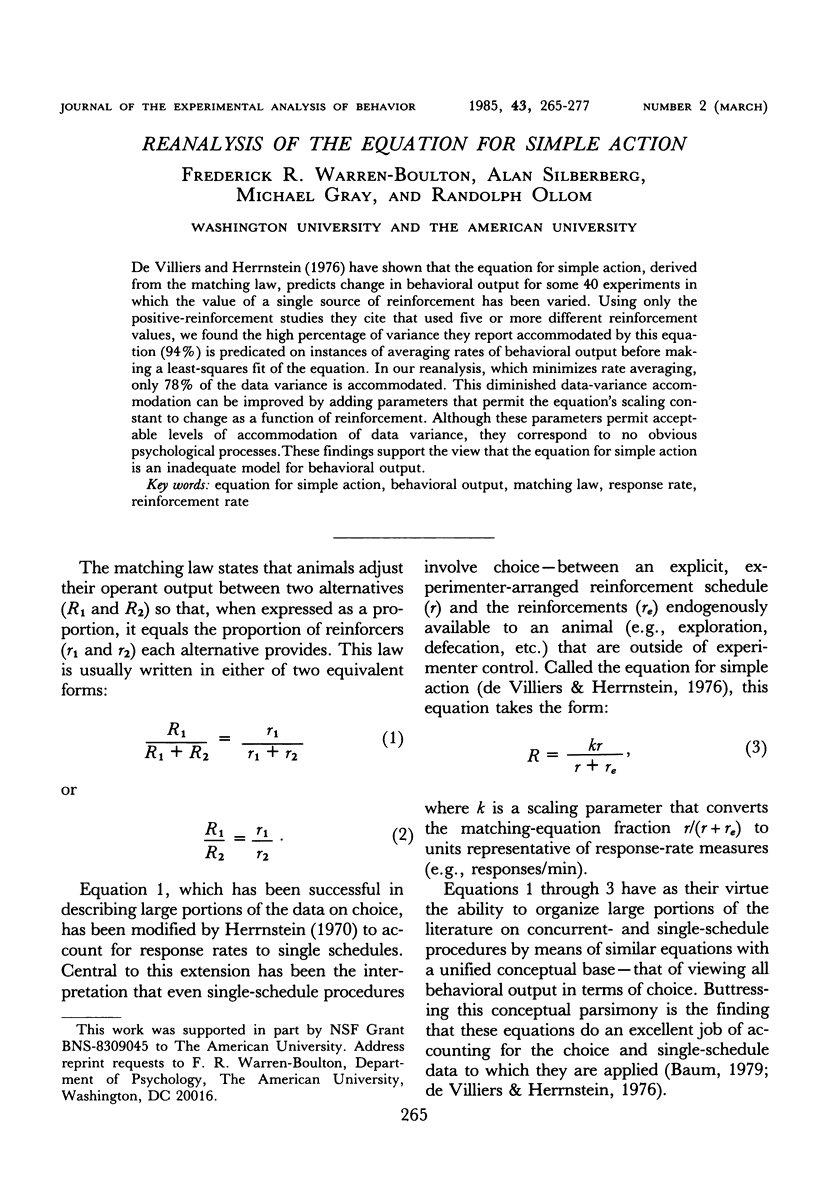
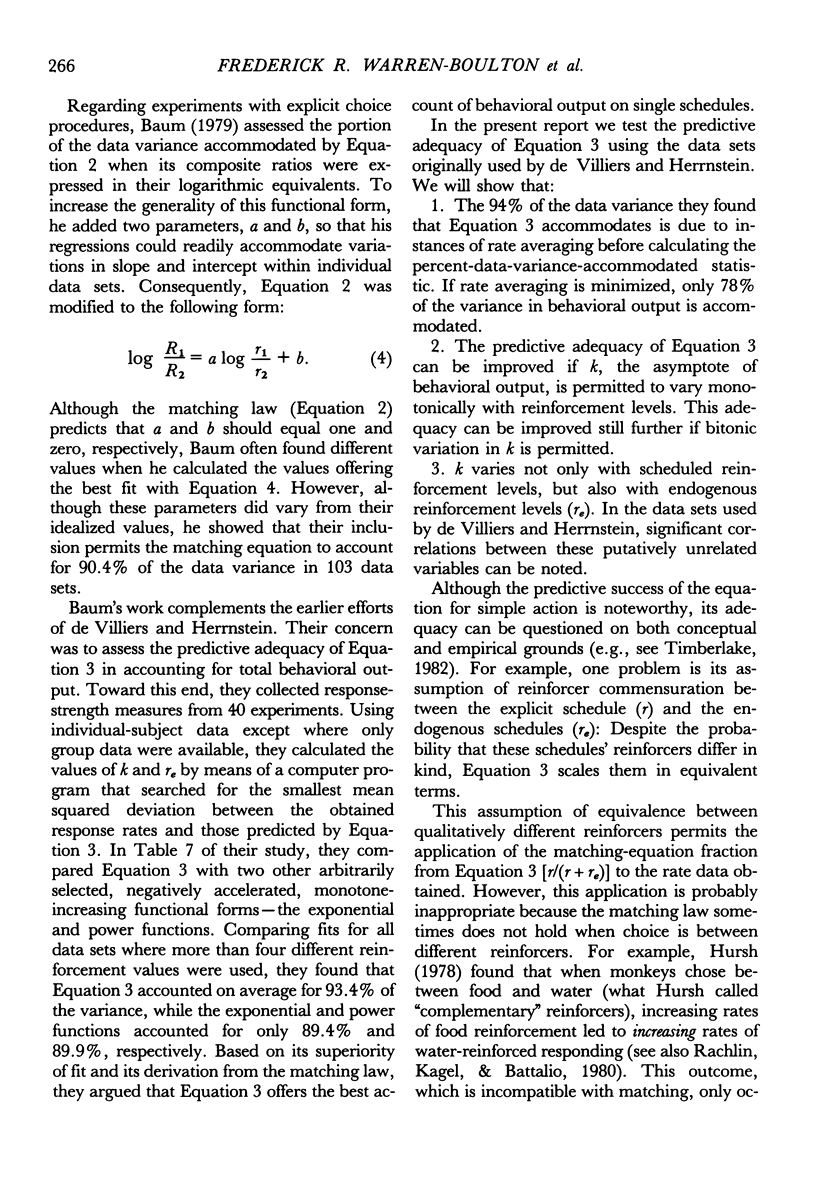
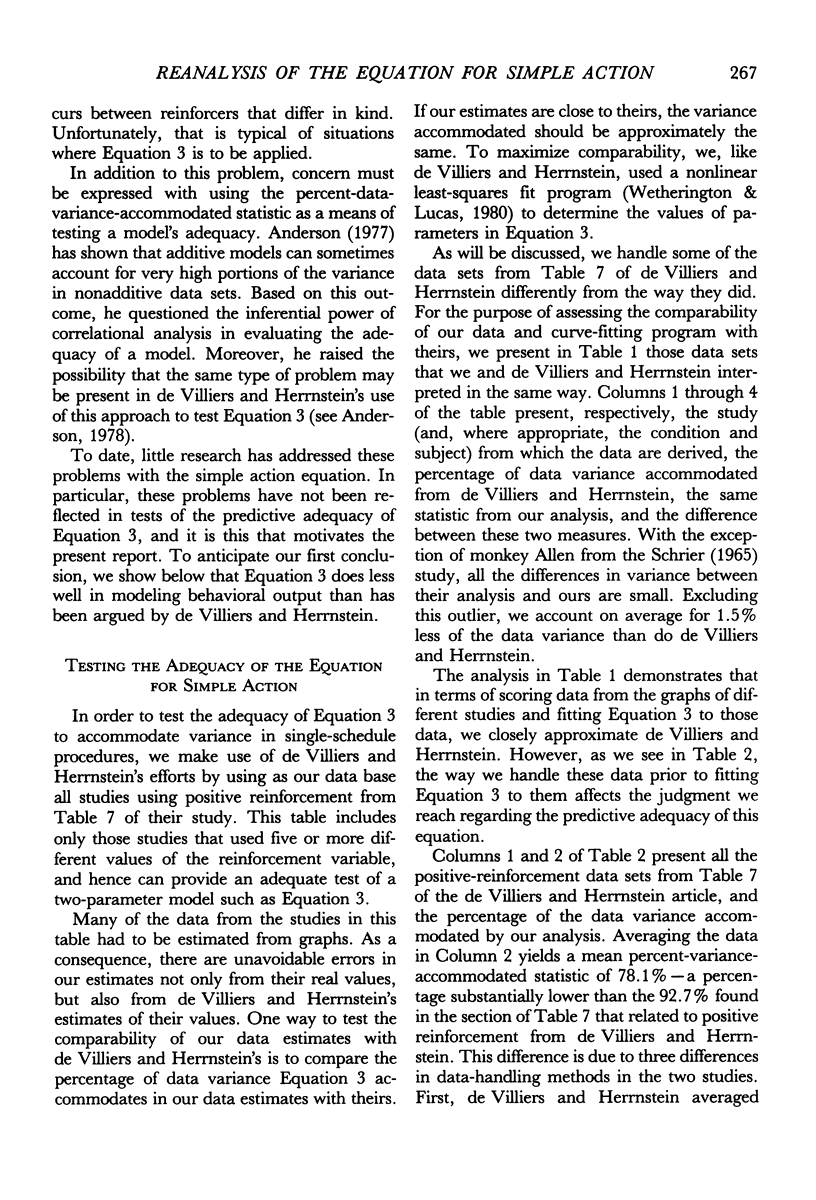
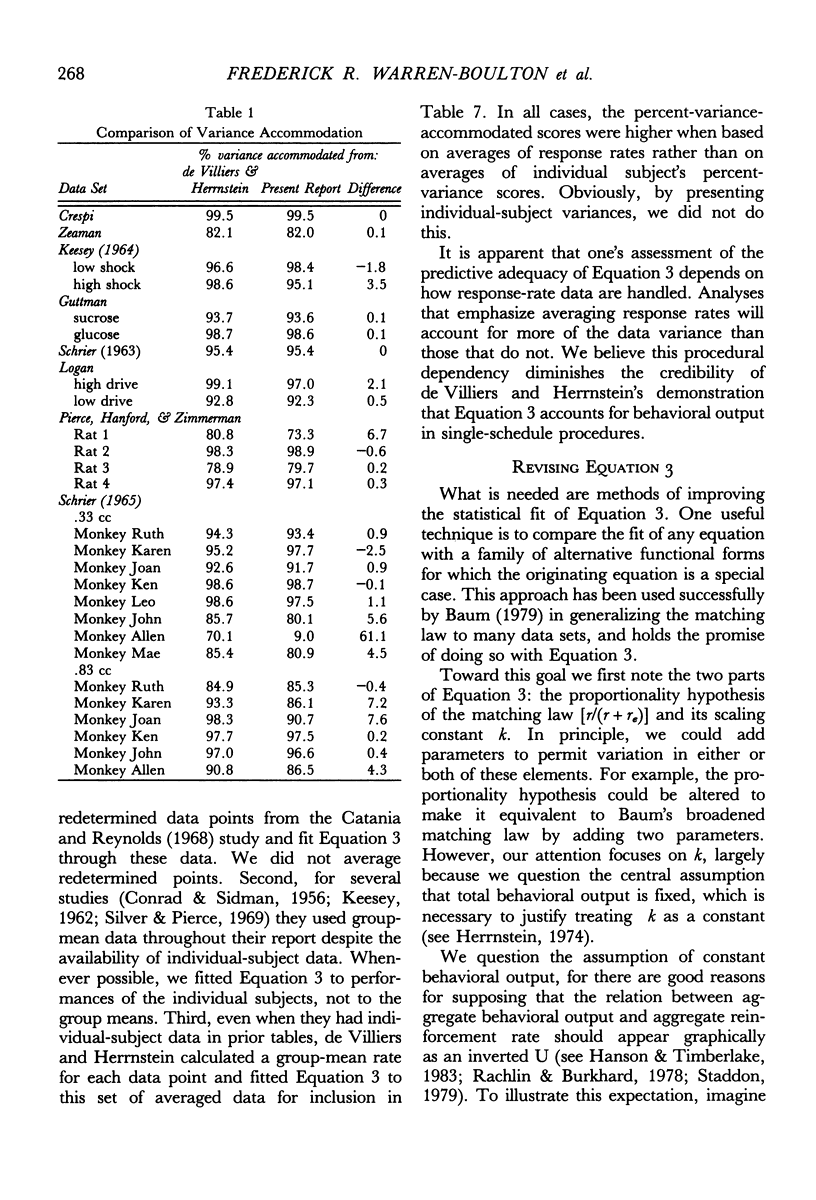
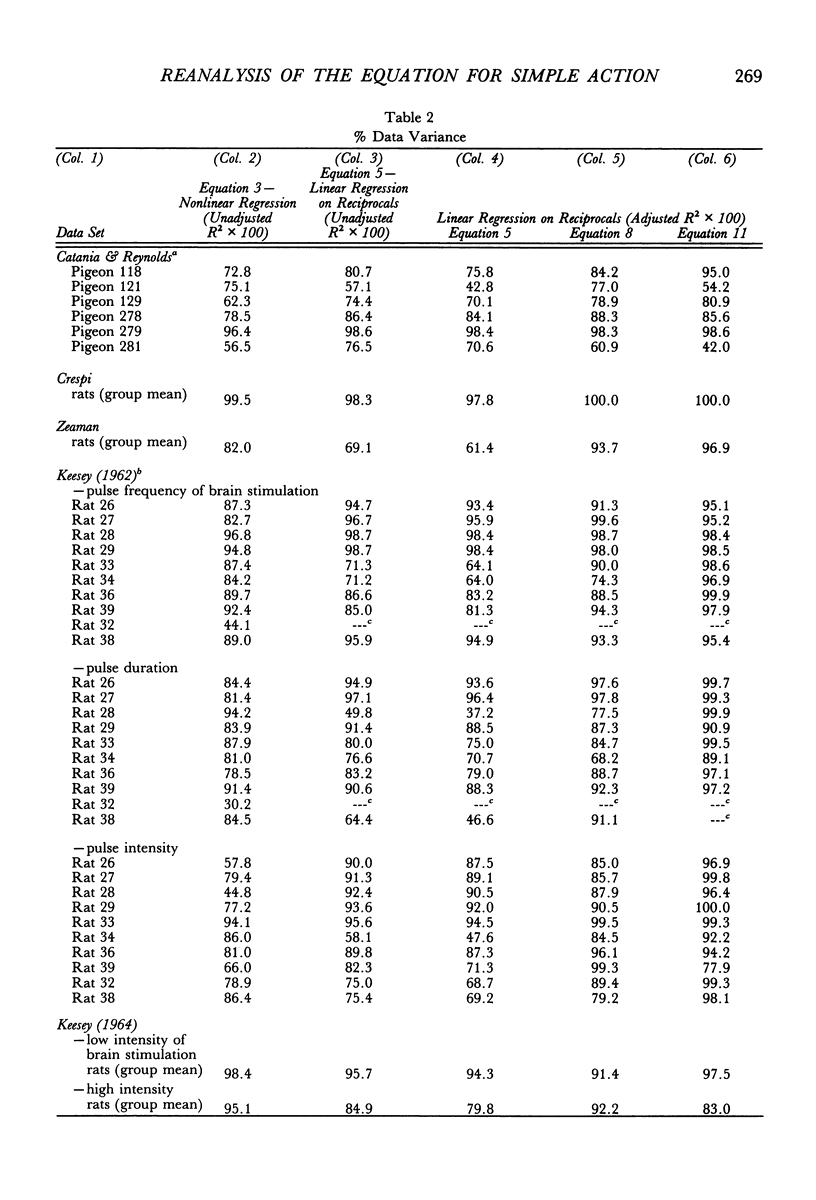
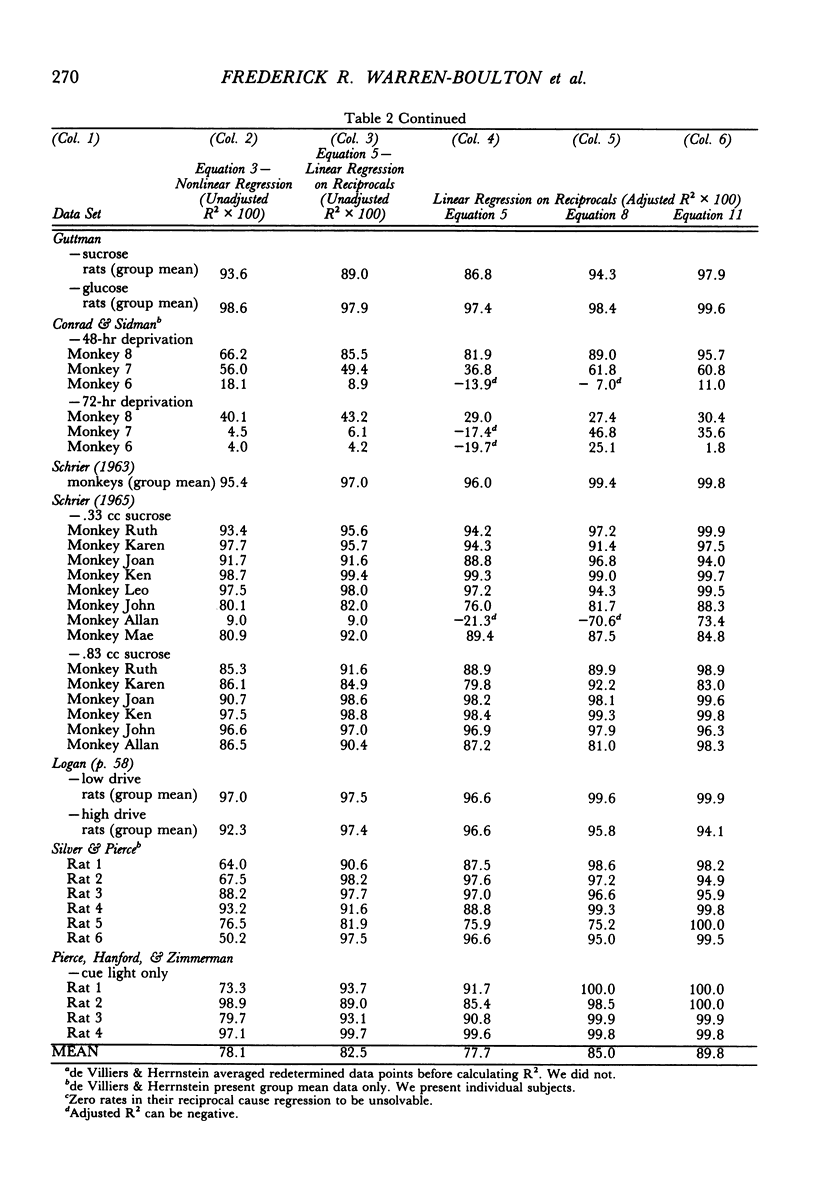
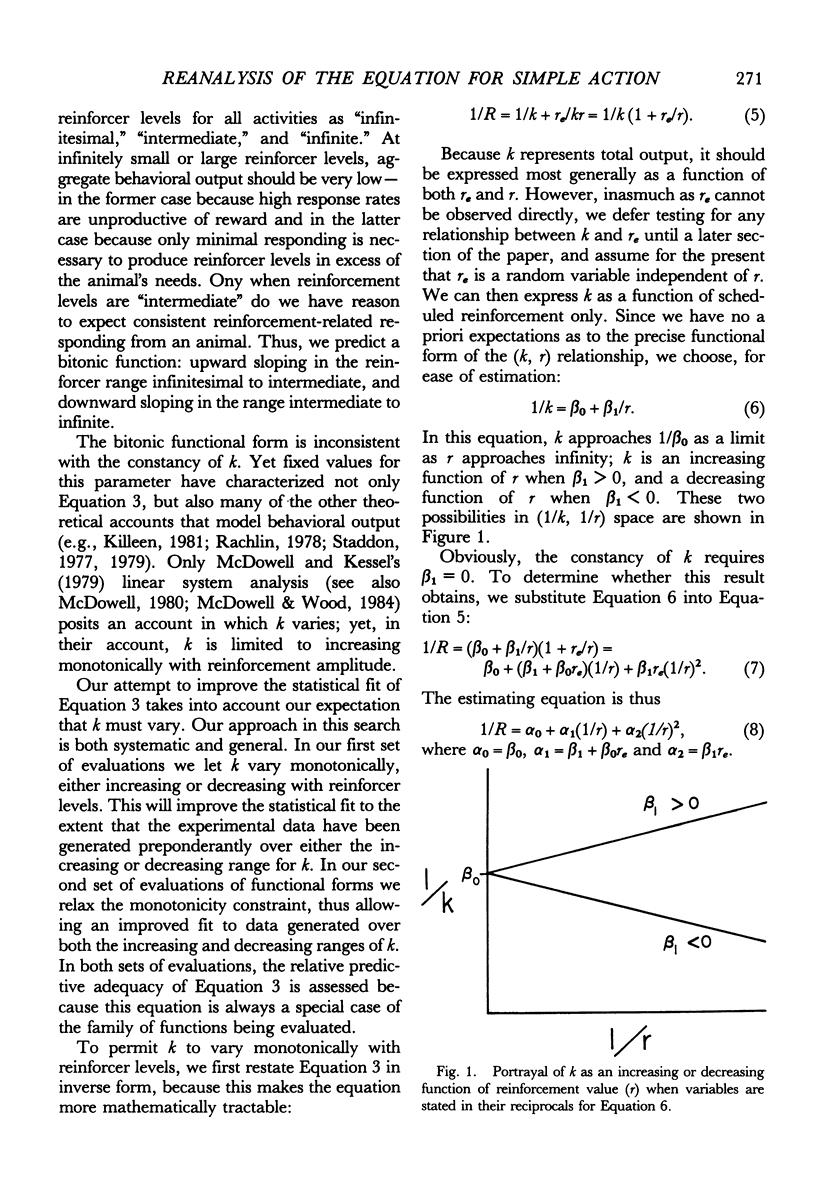

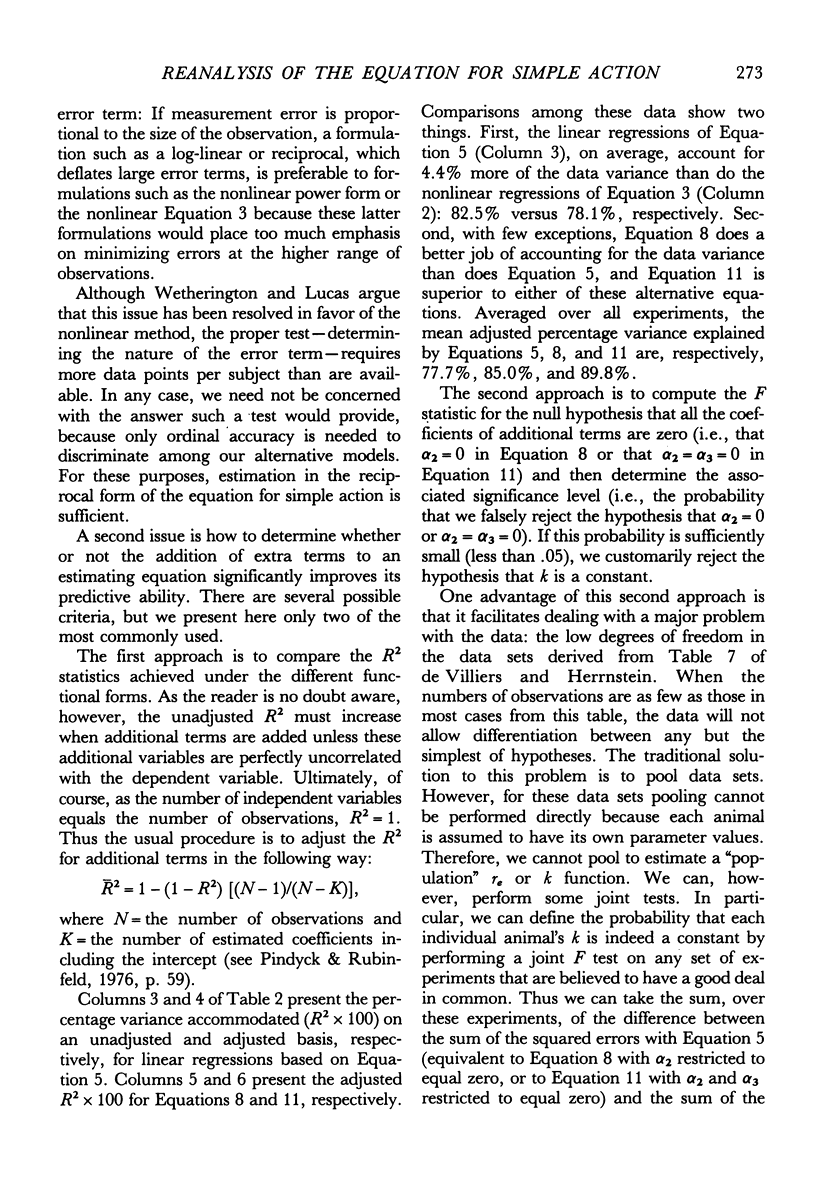
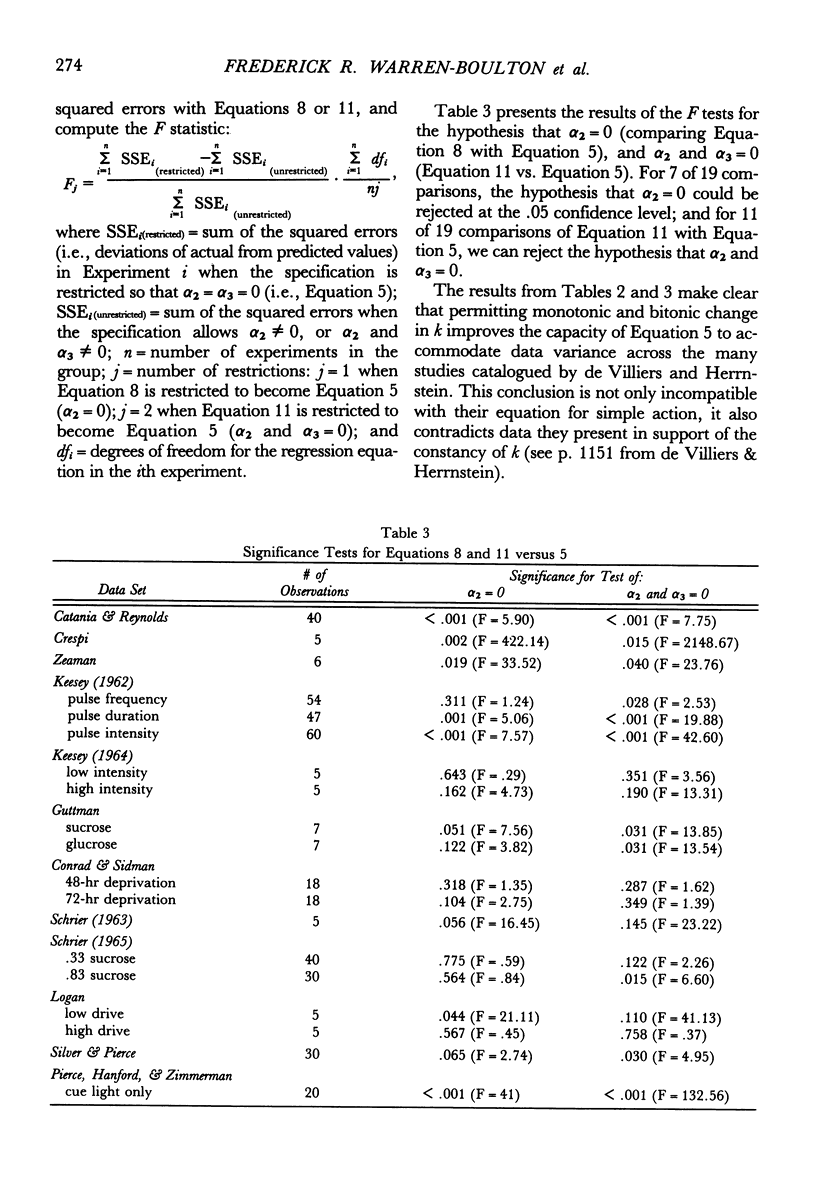
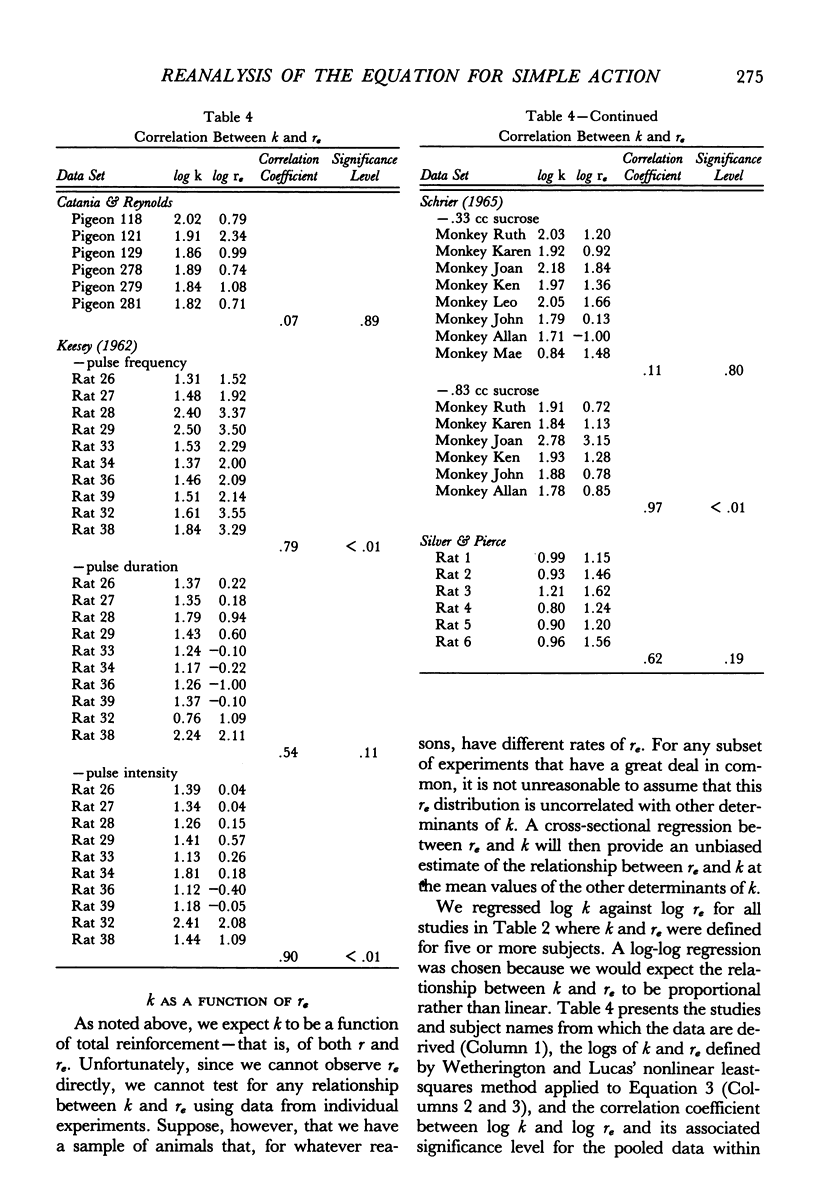
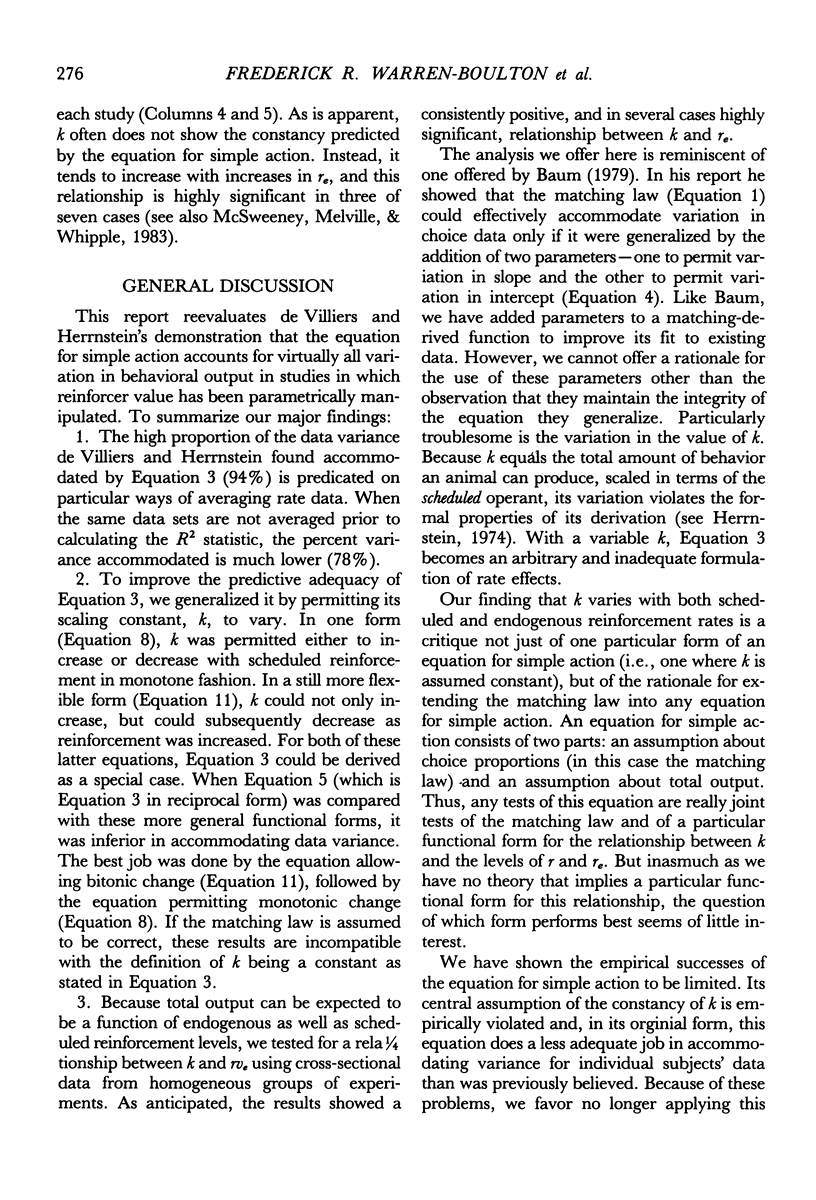
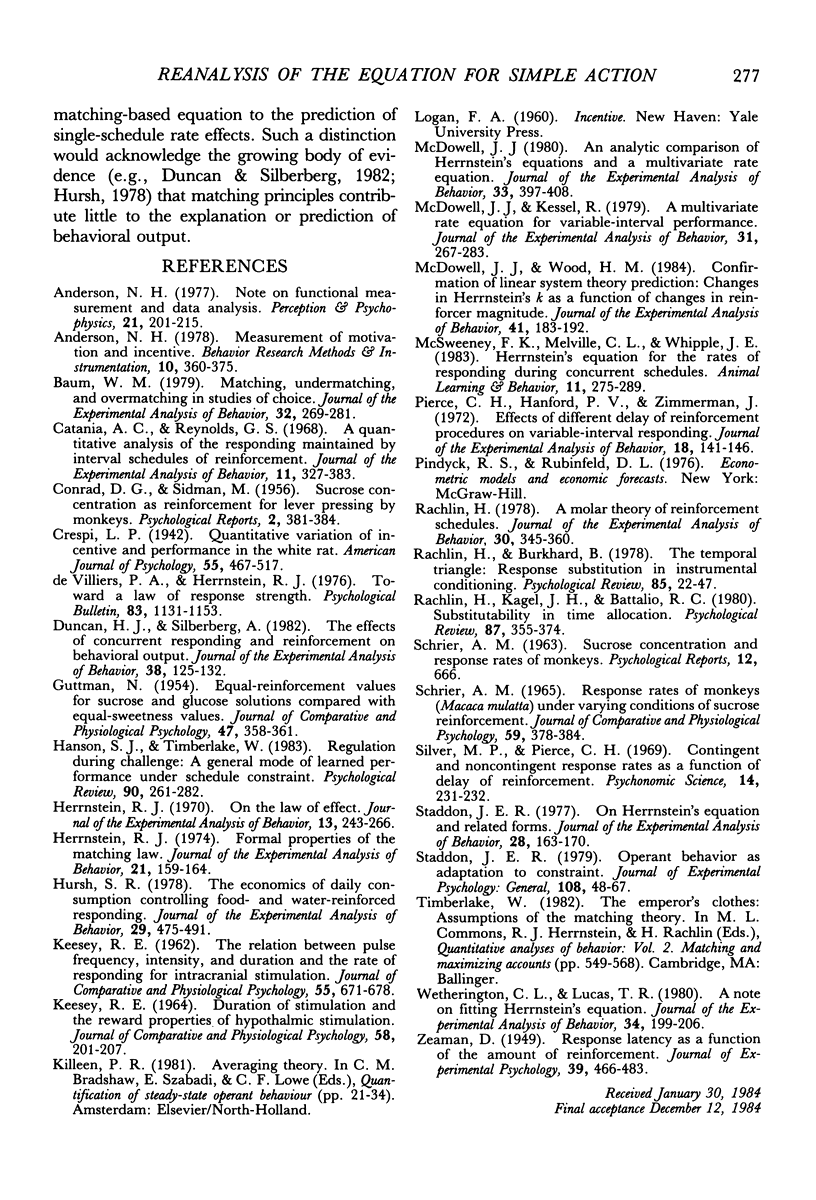
Selected References
These references are in PubMed. This may not be the complete list of references from this article.
- Baum W. M. Matching, undermatching, and overmatching in studies of choice. J Exp Anal Behav. 1979 Sep;32(2):269–281. doi: 10.1901/jeab.1979.32-269. [DOI] [PMC free article] [PubMed] [Google Scholar]
- Catania A. C., Reynolds G. S. A quantitative analysis of the responding maintained by interval schedules of reinforcement. J Exp Anal Behav. 1968 May;11(3 Suppl):327–383. doi: 10.1901/jeab.1968.11-s327. [DOI] [PMC free article] [PubMed] [Google Scholar]
- Duncan H. J., Silberberg A. The effects of concurrent responding and reinforcement on behavioral output. J Exp Anal Behav. 1982 Sep;38(2):125–132. doi: 10.1901/jeab.1982.38-125. [DOI] [PMC free article] [PubMed] [Google Scholar]
- GUTTMAN N. Equal-reinforcement values for sucrose and glucose solutions compared with equal-sweetness values. J Comp Physiol Psychol. 1954 Oct;47(5):358–361. doi: 10.1037/h0062710. [DOI] [PubMed] [Google Scholar]
- Herrnstein R. J. Formal properties of the matching law. J Exp Anal Behav. 1974 Jan;21(1):159–164. doi: 10.1901/jeab.1974.21-159. [DOI] [PMC free article] [PubMed] [Google Scholar]
- Herrnstein R. J. On the law of effect. J Exp Anal Behav. 1970 Mar;13(2):243–266. doi: 10.1901/jeab.1970.13-243. [DOI] [PMC free article] [PubMed] [Google Scholar]
- Hursh S. R. The economics of daily consumption controlling food- and water-reinforced responding. J Exp Anal Behav. 1978 May;29(3):475–491. doi: 10.1901/jeab.1978.29-475. [DOI] [PMC free article] [PubMed] [Google Scholar]
- KEESEY R. E. DURATION OF STIMULATION AND THE REWARD PROPERTIES OF HYPOTHALAMIC STIMULATION. J Comp Physiol Psychol. 1964 Oct;58:201–207. doi: 10.1037/h0043134. [DOI] [PubMed] [Google Scholar]
- KEESEY R. E. The relation between pulse frequency, intensity, and duration and the rate of responding for intracranial stimulation. J Comp Physiol Psychol. 1962 Oct;55:671–678. doi: 10.1037/h0049222. [DOI] [PubMed] [Google Scholar]
- Lee Wetherington C., Lucas T. R. A note on fitting Herrnstein's equation. J Exp Anal Behav. 1980 Sep;34(2):199–206. doi: 10.1901/jeab.1980.34-199. [DOI] [PMC free article] [PubMed] [Google Scholar]
- McDowell J. J. An analytic comparison of Herrnstein's equations and a multivariate rate equation. J Exp Anal Behav. 1980 May;33(3):397–408. doi: 10.1901/jeab.1980.33-397. [DOI] [PMC free article] [PubMed] [Google Scholar]
- McDowell J. J., Kessel R. A multivariate rate equation for variable-interval performance. J Exp Anal Behav. 1979 Mar;31(2):267–283. doi: 10.1901/jeab.1979.31-267. [DOI] [PMC free article] [PubMed] [Google Scholar]
- McDowell J. J., Wood H. M. Confirmation of linear system theory prediction: Changes in Herrnstein's k as a function of changes in reinforcer magnitude. J Exp Anal Behav. 1984 Mar;41(2):183–192. doi: 10.1901/jeab.1984.41-183. [DOI] [PMC free article] [PubMed] [Google Scholar]
- Pierce C. H., Hanford P. V., Zimmerman J. Effects of different delay of reinforcement procedures on variable-interval responding. J Exp Anal Behav. 1972 Jul;18(1):141–146. doi: 10.1901/jeab.1972.18-141. [DOI] [PMC free article] [PubMed] [Google Scholar]
- Rachlin H. A molar theory of reinforcement schedules. J Exp Anal Behav. 1978 Nov;30(3):345–360. doi: 10.1901/jeab.1978.30-345. [DOI] [PMC free article] [PubMed] [Google Scholar]
- SCHRIER A. M. RESPONSE RATES OF MONKEYS (MACACA MULATTA) UNDER VARYING CONDITIONS OF SUCROSE REINFORCEMENT. J Comp Physiol Psychol. 1965 Jun;59:378–384. doi: 10.1037/h0022064. [DOI] [PubMed] [Google Scholar]
- Staddon J. E. On Herrnstein's equation and related forms. J Exp Anal Behav. 1977 Sep;28(2):163–170. doi: 10.1901/jeab.1977.28-163. [DOI] [PMC free article] [PubMed] [Google Scholar]


